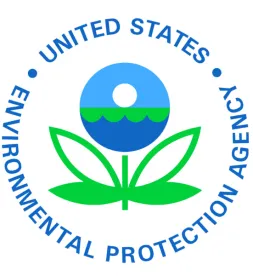On June 19, 2019, the Environmental Protection Agency (EPA) finalized three separate and distinct rulemakings as part of the Affordable Clean Energy (ACE) rulemaking package. First, EPA finalized the repeal of the Obama administration’s Clean Power Plan (CPP). Second, EPA promulgated the final ACE rule itself, which consists of emission guidelines requiring states to develop and submit to the EPA plans that establish standards of performance for CO2 emissions from certain existing coal-fired electric utility generating units (EGUs) within their jurisdictions. Third, EPA finalized regulations governing implementation of the ACE rule and any future emission guidelines issued under Clean Air Act (CAA) Section 111(d).
EPA originally proposed not only the above actions but also certain revisions to the New Source Review (NSR) Program. However, EPA has opted to finalize the NSR revisions at a later date.
Section 111(d)
EPA finalized the ACE rule pursuant to Section 111(d) of the CAA. This section directs EPA to promulgate regulations establishing a federal-state process for setting standards of performance for existing sources that limit emissions of pollutants not otherwise regulated in other specified sections of the CAA. Implementing Section 111(d) regulations for a particular category of emission sources is a three-step process. First, EPA issues a “guideline” for states to use in developing compliance plans that include standards of performance for the covered sources. The guideline identifies what EPA determines is the “best system of emission reduction” (BSER) for the sources. Second, each state submits a plan to EPA that includes standards of performance for the covered sources in the state. Third, EPA approves or disapproves of the state plans. If a state fails to submit an approvable plan, then the CAA requires EPA to impose a federal plan.
Clean Power Plan Repeal
As the rule’s first action, EPA finalized its repeal of the CPP on the grounds that the CPP exceeded EPA’s statutory authority under the CAA. EPA concluded that the CPP’s interpretation of “best system of emission reduction” is inconsistent with the plain meaning of that term under CAA Section 111. In particular, EPA asserted that the text of Section 111 limits the universe of valid “systems” to those whose “application” to an “existing source” yields emission reductions. EPA reasoned that the CPP’s interpretation of “best system of emission reduction” exceeded the agency’s authority because it was premised on shifting generation among multiple covered EGUs and also to otherwise unregulated renewable generators. Such a system, EPA concluded, could not be “appli[ed]” at an individual covered source, and therefore falls outside the plain meaning of “best system of emission reduction.” EPA supported this conclusion with additional arguments based on the context, structure, and legislative and regulatory history of the CAA.
EPA further stated that it intends the repeal of the CPP to be independent from the other final actions in the rulemaking, meaning the CPP’s repeal could be upheld even if the D.C. Circuit invalidates the ACE rule.
Finalization of the ACE Rule
As the rule’s second action, EPA finalized the ACE rule itself, which consists of new emission guidelines to inform states on the development and implementation of state plans that establish standards of performance for the covered sources. Under the ACE rule, the universe of covered EGUs is limited to coal-fired EGUs. In the emission guidelines, EPA determined that the BSER for existing coal-fired EGUs is based on the CO2emissions reductions achievable by heat rate improvement (HRI) measures that can be applied to a designated facility.
EPA also finalized a list of “candidate” HRI measures, which are the “most impactful.” The list is unchanged from the 2018 ACE rule proposal: neural network/intelligent sootblowers; boiler feed pumps; air heater and duct leakage controls; variable frequency drives; blade path upgrades (for steam turbines); redesign/replace economizers; and improved operating and maintenance practices.
The final ACE rule also clarifies the roles of EPA and the states under CAA Section 111(d). As stated in the final notice, it is the states’ responsibility to use the guidelines provided by EPA to develop standards of performance that reflect the application of the BSER. The final rule provides that states also may consider source-specific factors – including the remaining useful life of an existing source – in applying a standard of performance to that source. In this way, EPA explains in the final rule that the state and federal roles complement each other; EPA has the authority and responsibility to determine BSER at the national level, while the states have the authority and responsibility to establish and apply standards of performance for their existing sources on a unit‑by‑unit basis, taking into account source-specific factors when appropriate.
New Implementing Regulations
As the rule’s third action, EPA finalized revisions to the implementing regulations that apply to the ACE rule and any future Section 111(d) rules. EPA explained that the purpose of the revisions is to better harmonize the existing implementing regulations with the statute by making clear that states have broad discretion in establishing and applying emissions standards consistent with the BSER. The revisions also more closely align the deadlines for state and EPA action on Section 111(d) plans with the deadlines for state and EPA action on CAA Section 110 state implementation plans (SIP).
Impacts of EPA Rule
As part of the Regulatory Impact Analysis (RIA) to be released with the final rule, EPA produced a benefit-cost analysis comparing the ACE rule to a single baseline which does not include the projected reductions that would have been achieved by the CPP. Overall, the analysis indicates that the impacts of the rule in terms of emissions, compliance costs, and other energy-sector effects are small compared to the recent market-driven changes that have occurred in the power sector.







 />i
/>i
